USS Portland
By Jon Engelsman
July 24, 2018
A tour of a US Navy amphibious transport dock, the USS Portland.
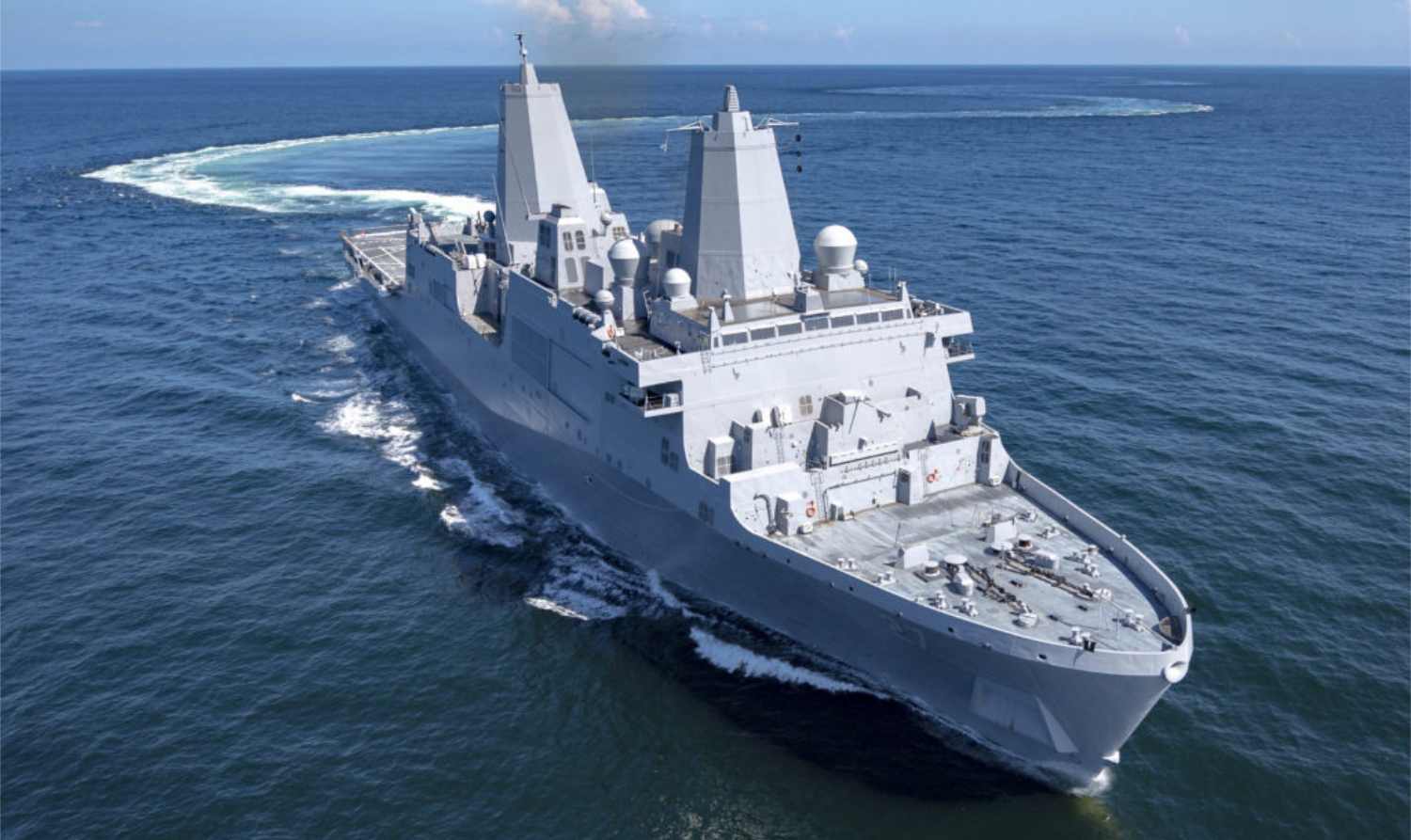 Lance Davis/HII
Lance Davis/HII
The 11th San Antonio-class amphibious transport dock in the US Navy, the USS Portland (LPD 27) is the first naval ship named after the city of Portland, Oregon. The ship was in her namesake town for a commissioning ceremony on April 21st, 2018 and I was fortunate enough to be there for a public tour.
San Antonio-Class Ships
The primary role of the *San Antonio-class" amphibious transport dock is to provide transport for the US Marine Corps “mobility triad”, including the Expeditionary Fighting Vehicle (EFV), the Landing Craft Air Cushion (LCAC) and the MV-22 Osprey tilt-rotor aircraft.
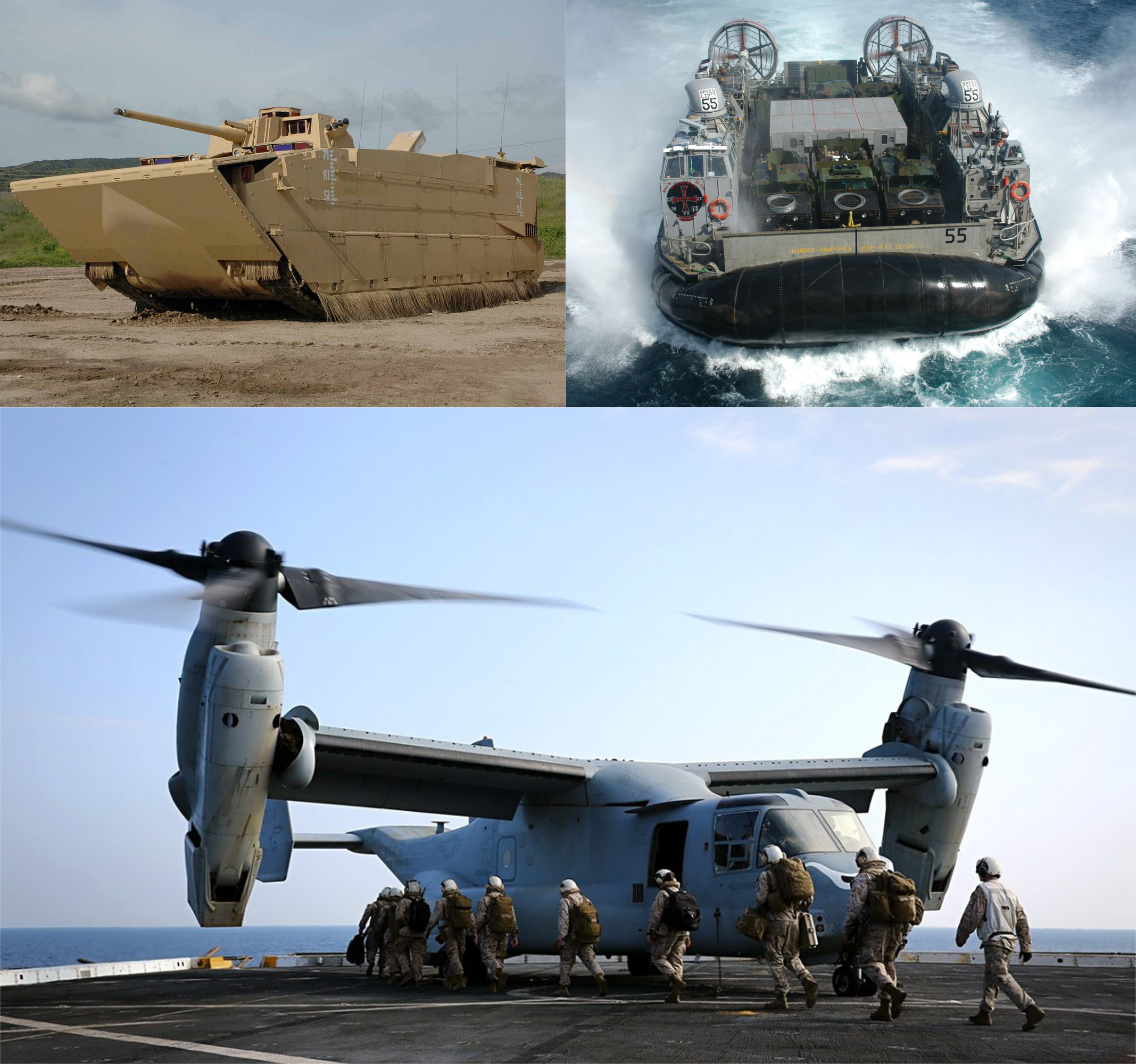
The purpose of all of these vehicles is to provide transport for Marines in amphibious assault environments. Check out this quick highlight video for more information on this amphibious fighting force.
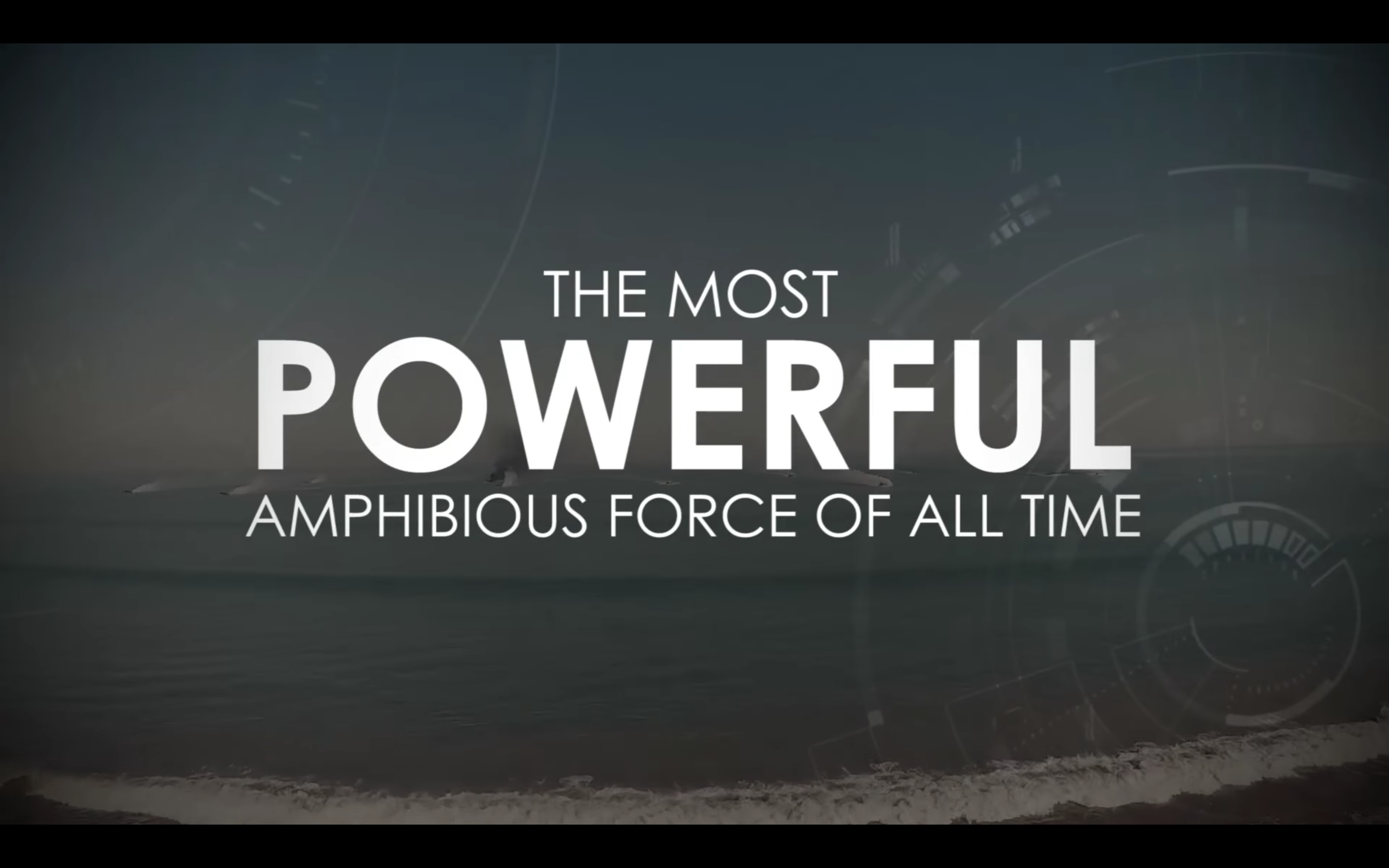
Below, you can see some of the ship’s internal layout, highlighting the well deck with LCAC’s and various wheeled transport vehicles.
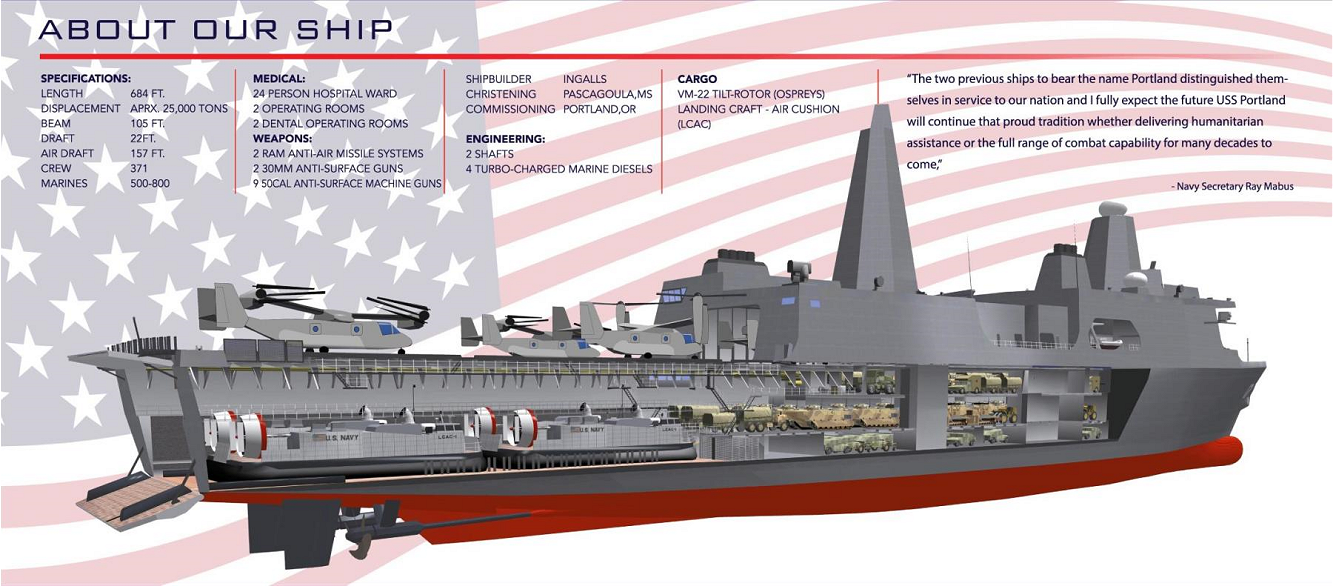
And last, it’s important to keep in mind that this is a big ship! It’s the 4th largest ship in the Navy, by length and displacement, behind only the carriers and the America-class and Wasp-class amphibious assault ships.
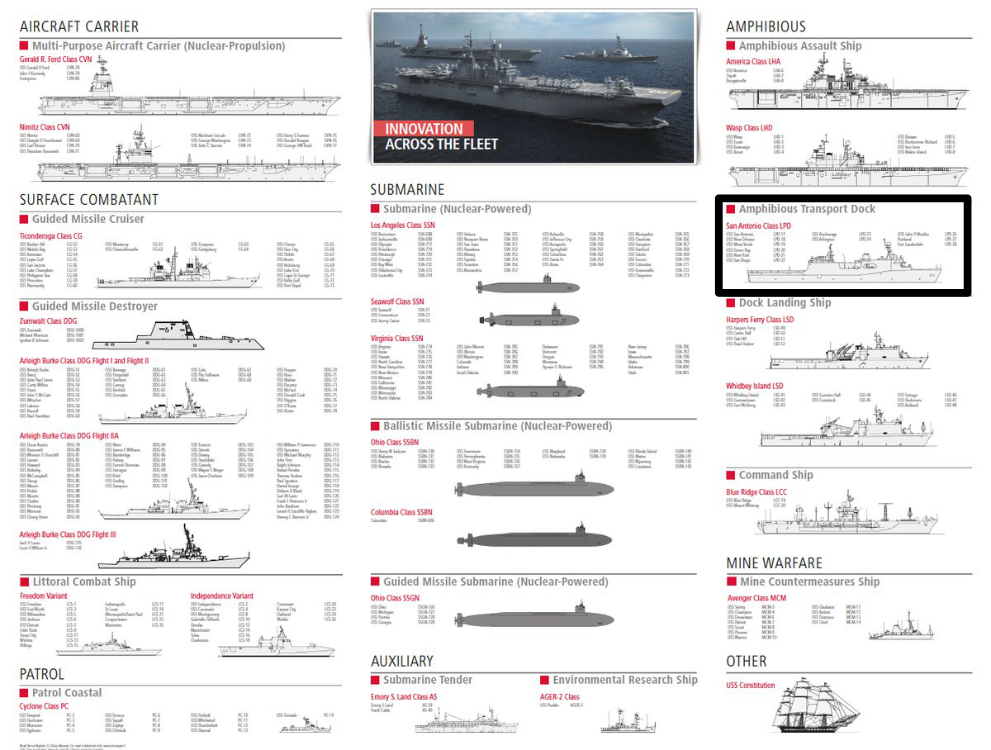 source
source
Tour
The week before the commissioning ceremony, the USS Portland was open to the public for unguided tours. We were able to roam free on the flight deck, hangar deck and most of the well deck. But they also opened up a somewhat restricted, roped-off tour of the ships interior, including the bridge and CIC.
Bow
Starting at the bow of the ship, some interesting things to note.

To the left, you can see one of the RIM-116 Rolling Airframe Missile (RAM) pods and a Mk44 Bushmaster II 30-mm cannon. And to the right, you can make out the painted logo of the local soccer team, the Portland Timbers! A nice touch.
Binoculars and Placards
I don’t know why, but I always get a kick out of placards for seemingly simple objects on military systems.

For example, a Ship Binocular Carriage Mark III Mod 5, made by Optex Systems, Inc in Richardson, Texas. I also enjoy looking up the different contractors responsible for all of the components that make up a large weapons systems like a ship. An admittedly odd pastime.
Electrical Panels
Another odd pastime? Paying attention to electrical distribution systems on ships and aircraft. Mmm, 450 VAC, a good voltage.

It turns out 450 VAC @ 60 Hz is the standard naval electrical distribution, although newer amphibious LHD/LHA ships, nuclear carriers and the DDG-1000 use 4160 VAC. If you’re really interested, there’s a lot of literature out there on these advanced electrical distribution systems that are being developed to handle higher energy electrical loads on ships, like electromagnetic catapults, railguns, etc.
Boat Valley and Knuckleboom Crane
The interior of the ship had a surprising feature that we walked through on the tour. First, there’s the tall, octagonal structure known as the Advanced Enclosed Mast/Sensors (AEM/S) System mast.

And right behind that, there was as a “boat valley”. This model of a San Antonio-class ship shows this part of the ship.
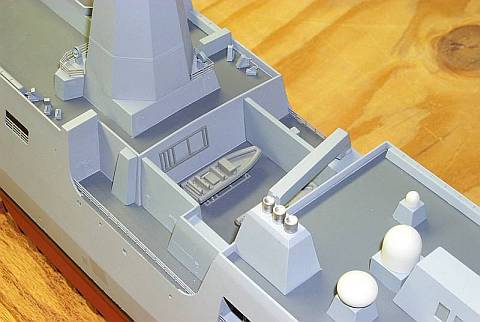 source
source
The boat valley is used to hold and deploy rigid-hull inflatable boats (RHIB’s). To do this, it uses a stealthy “knuckleboom” crane.

It’s not intuitively obvious how this odd crane works, so I had to look it up. It’s an interesting concept which keeps all of the crane mechanisms hidden behind a stealthy exterior until it’s needed, when it then unfolds itself for old-fashioned crane action.
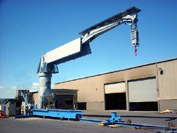 source
source
It also turns out that the crane on the San Antonio-class ships happens to be made by a local Oregon company, Allied Systems Inc out of Sherwood, OR. So there’s that.
Here’s a good view of one of the RHIB’s in the boat valley, with the control chair of the knuckleboom crane in the back left.
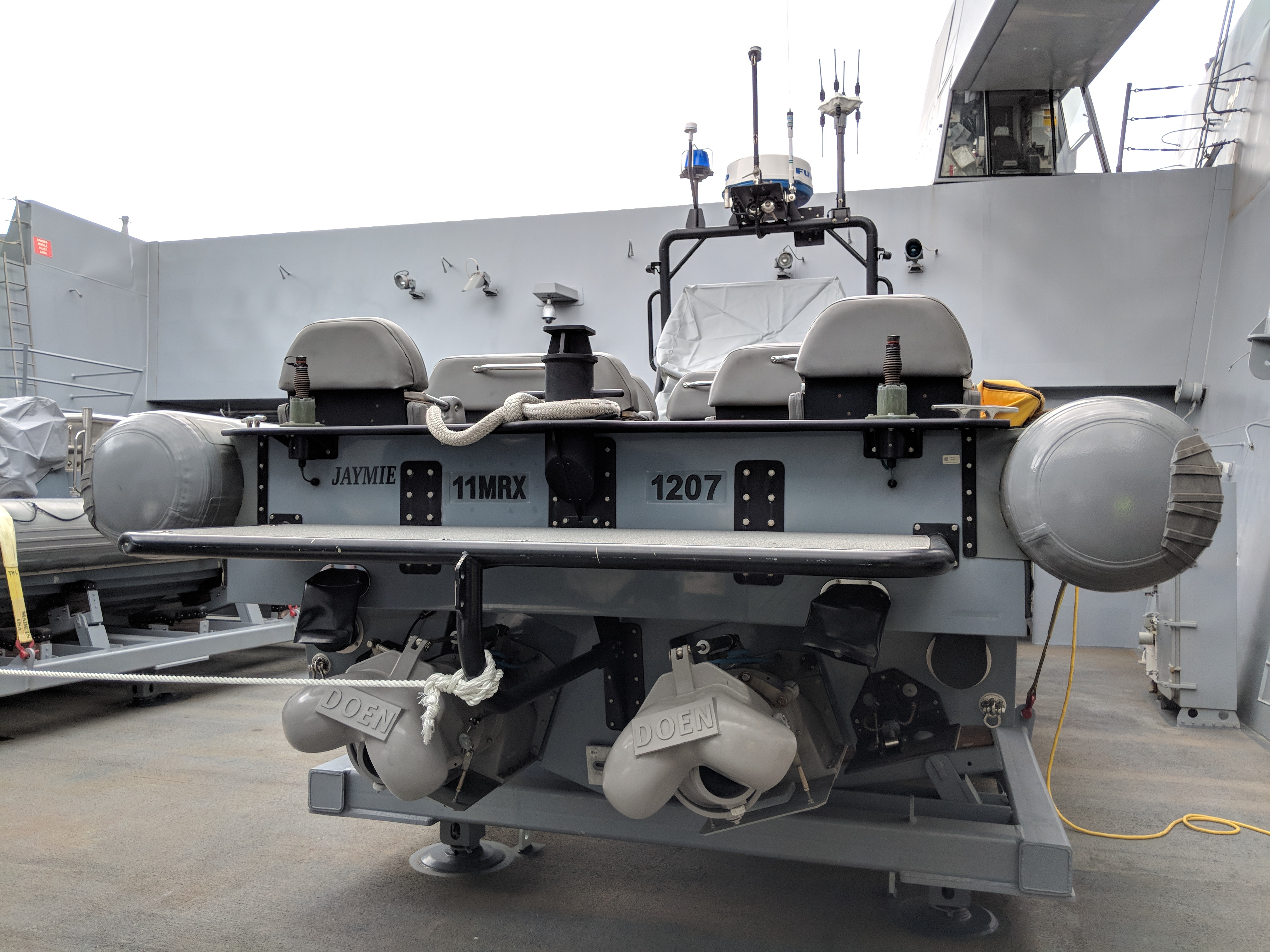
And here’s a closeup of the waterjets powering the RHIB.
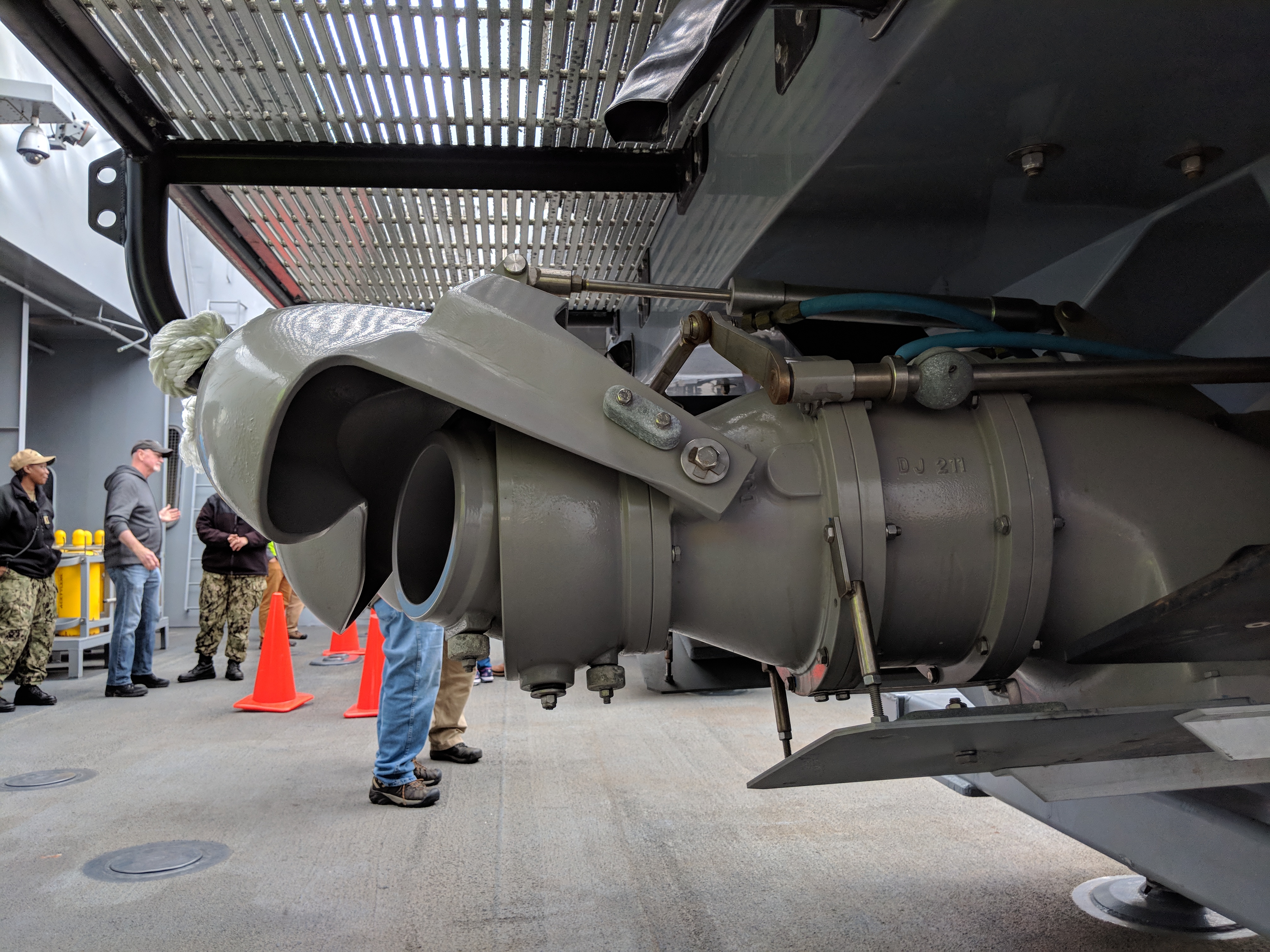
I’m a big fan of water + jets.
Antenna
On the side of the ship, we spotted one of these things.

Now, we knew it was an antenna but we were curious what system it was used for on the ship. LHF, VHF, AM radio, HAM? So we started asking any Navy sailor we could, but no one knew the answer, not even the crew in the CIC! Now, I admit that they might not have told us if they knew, but it really felt like no one knew the answer.
So what do I do? Well, I start googling around until I find the specification sheet for that exact model of antenna, that’s what. Turns out it’s a Valcom AS-3771-B/U whip antenna for VLF comms. Umm…good thing we all know that bit of detail now.
Well Deck
Moving into the well deck, I apparently didn’t take a lot of pictures in there. It was an interesting mix though. Marines demonstrating rifles, machine guns and armor, including Humvees with mounted 50-cals and MRAP transport vehicles. Navy sailors showing off water filtration systems, earth movers and other Seabee gear.
I did take a picture of some crates on a truck though. Turns out they were lithium batteries for the EOD bomb suit the Marines were showing off.
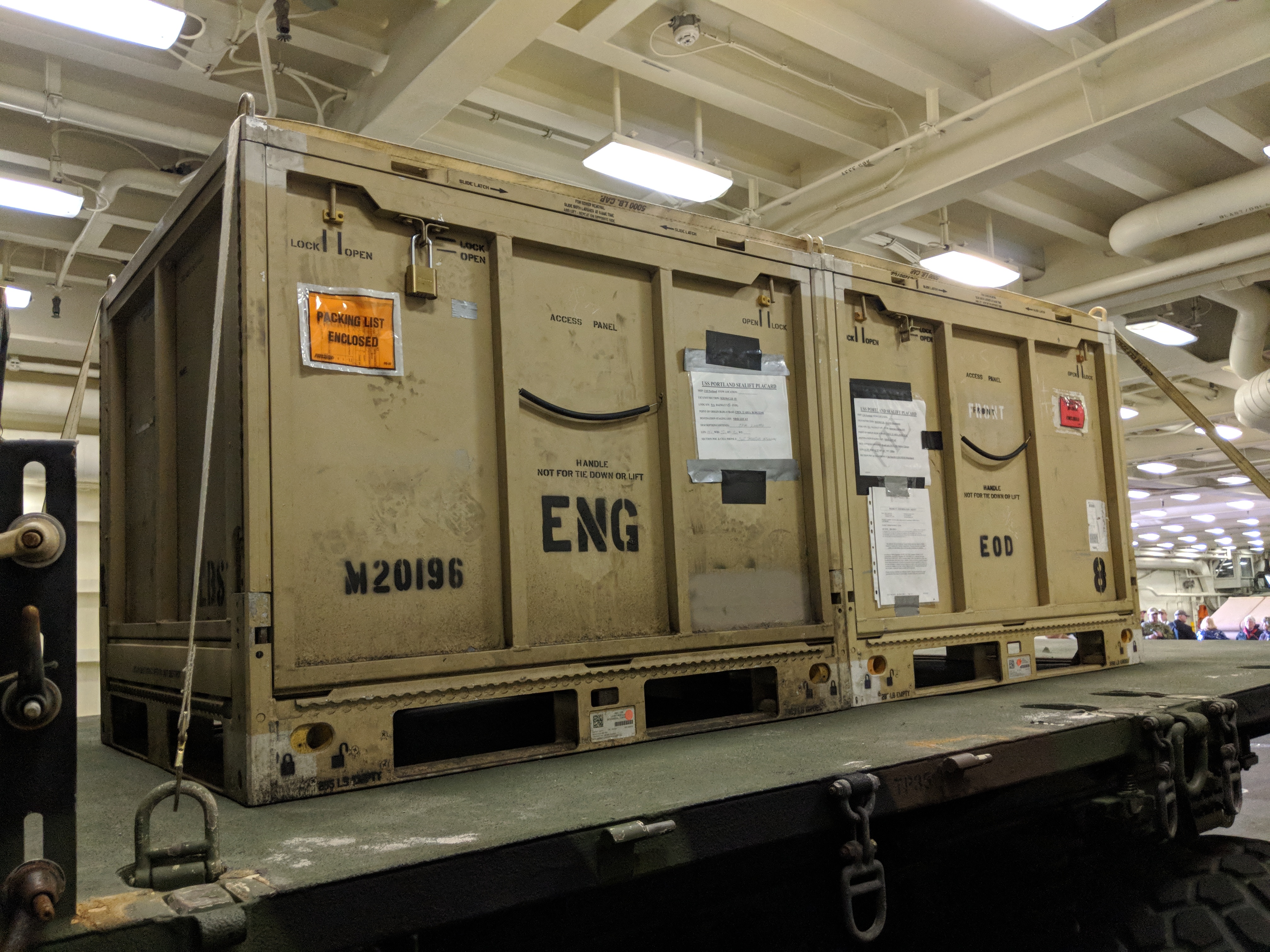
LCAC
One of the highlights of the well deck was checking out the Landing Craft Air Cushion (LCAC) vehicle. A good ole-fashioned hovercraft. We asked a lot of questions about the power-train and got a good walk-through of the cockpit by one of the pilots.
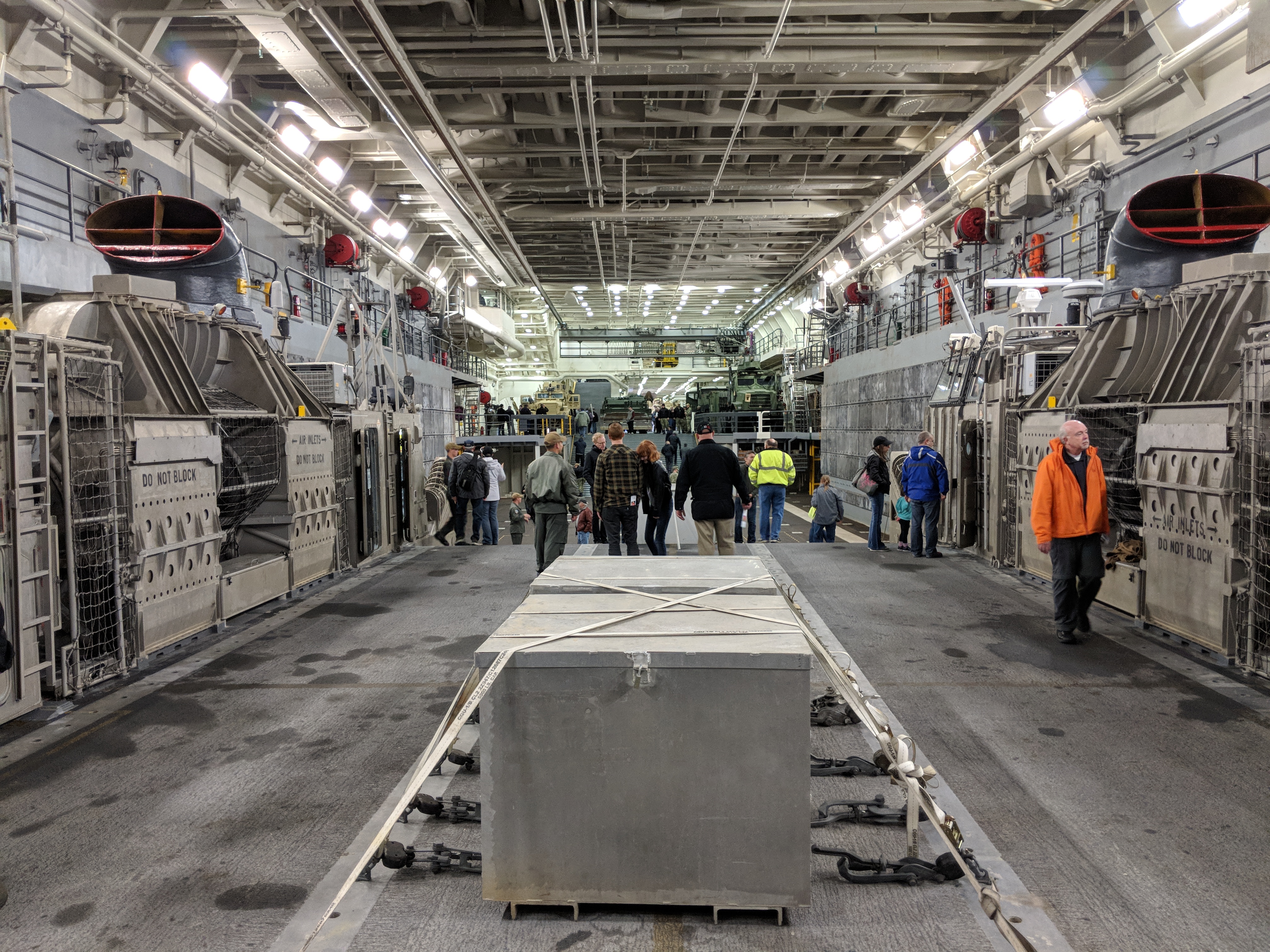
It turns out that a good pilot can gently glide an LCAC into the well deck, which is only a meter or so (at most) wider than the LCAC itself. For example, this is what a docking looks like.
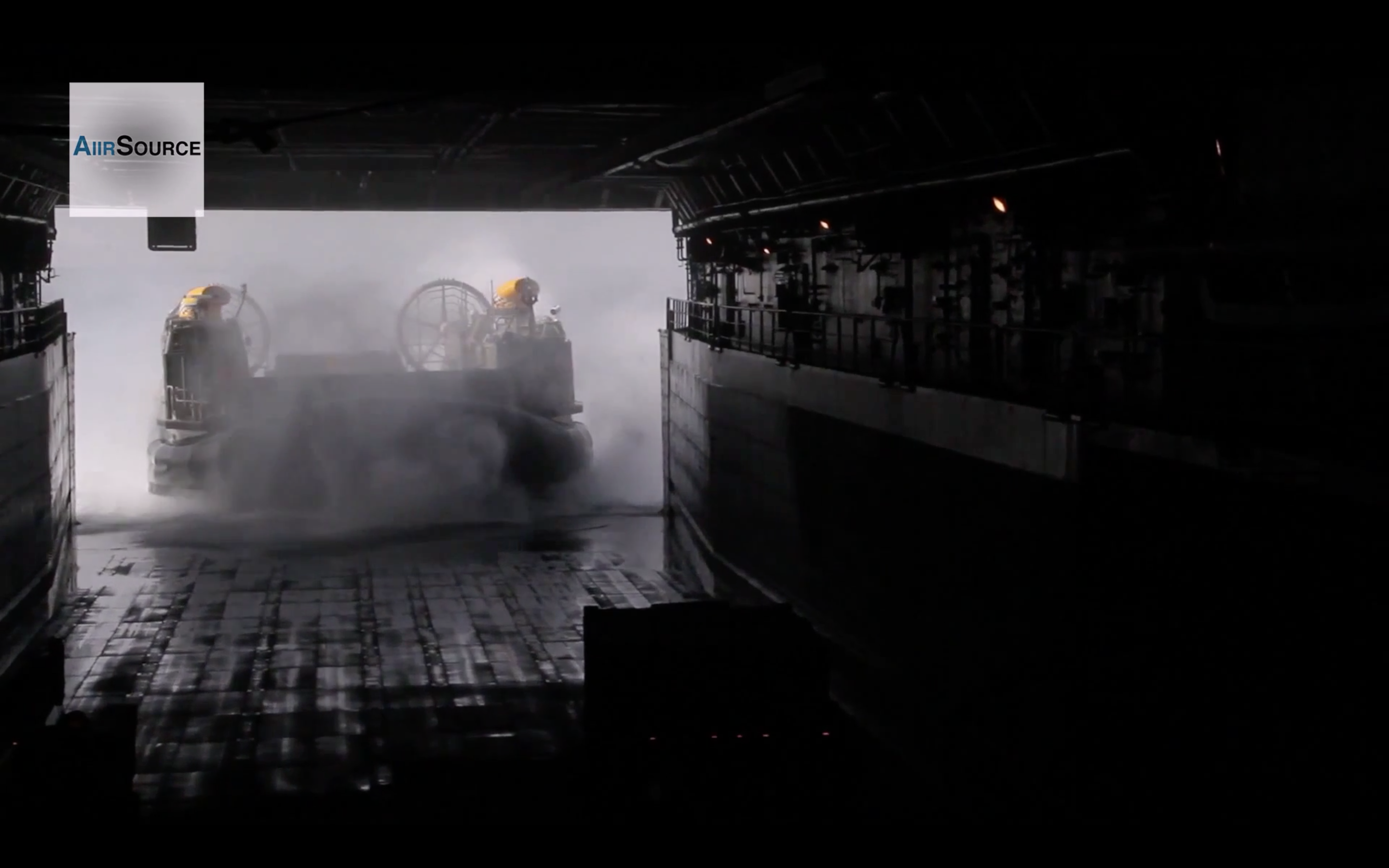
But we were convinced, and the pilot confirmed, that a bad pilot will just slam it home and bumper lane it in. Apparently the well deck, and the LCAC, can take a bit of a beating.
Osprey
Up on the flight deck, we walked through the MV-22 Osprey sitting on deck and had a good chat with its crew chief.
There was a sensor suite on the back of the Osprey (both sides) that I asked the crew chief about. Turns out they’re radar/IR sensors for the anti-missile countermeasures (chaff and flares).

Destructive Maul
And last but not least, my favorite thing on the ship was probably its least technical!
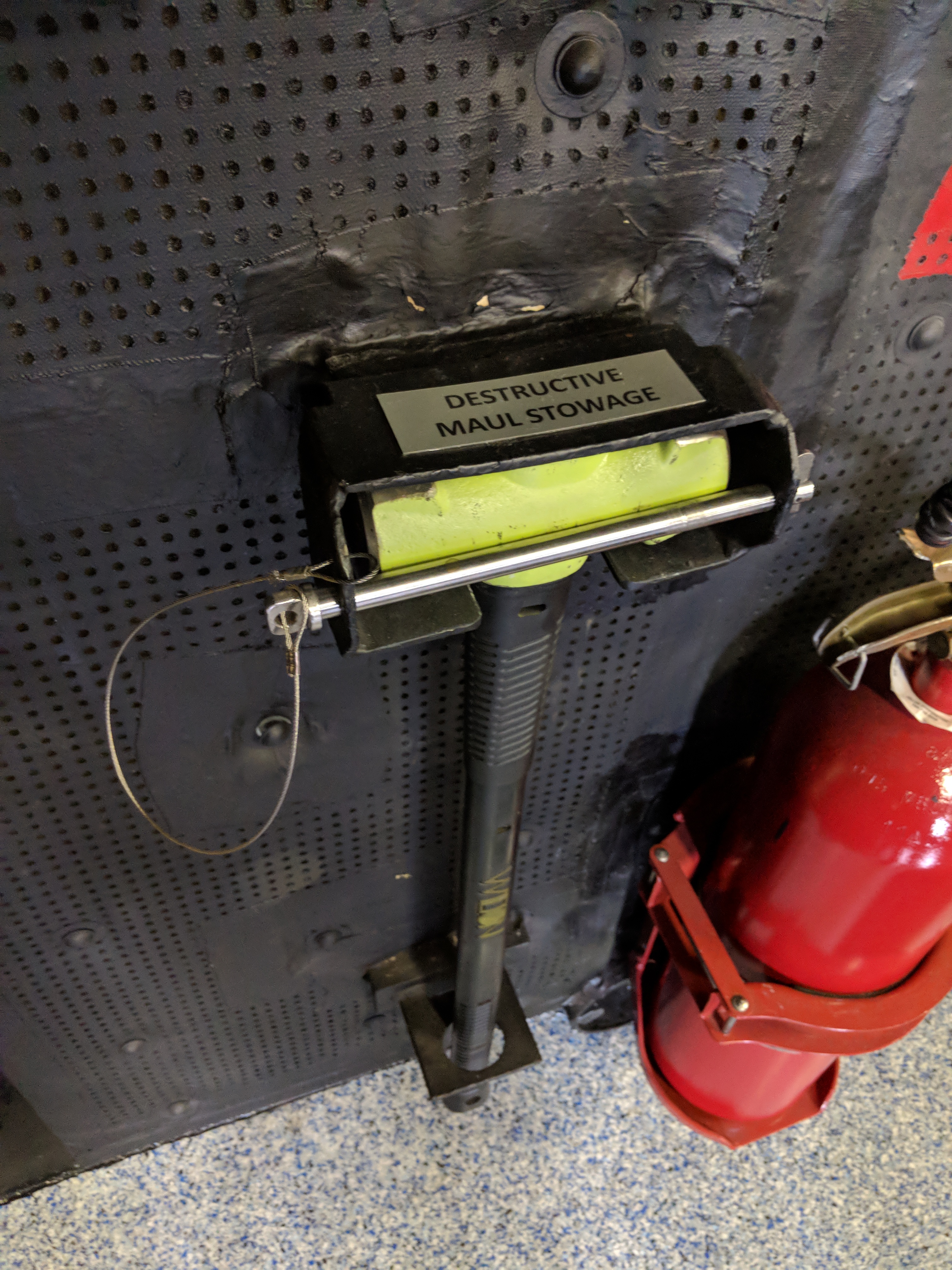
Now, we saw this on the bridge of the ship. So we had to ask, whaaaaat exactly was this here for?
With a straight face, one of the sailors told us that in case the ship was captured, the “Destructive Maul” would be used to destroy any sensitive equipment on the bridge of the ship. Apparently it’s a common item on Navy ships, with sightings of one on an Arleigh Burke-class missile destroyer.
Farewell
And that was the tour! A great opportunity and only the second US Navy ship I’d ever been on at that point*.
A couple of years ago, I took a tour of an Arleigh Burke-class missile destroyer a couple of years ago during Fleet Week in Portland. Even though we didn’t go inside of the destroyer, I was surprised at how much roomier the Portland felt. It gave me an appreciation for how small but deadly those destroyers are, and also how big Navy ships can be.
Thanks to the US Navy for the tour, and fair winds USS Portland.

- Posted on:
- July 24, 2018
- Length:
- 6 minute read, 1242 words
- See Also: